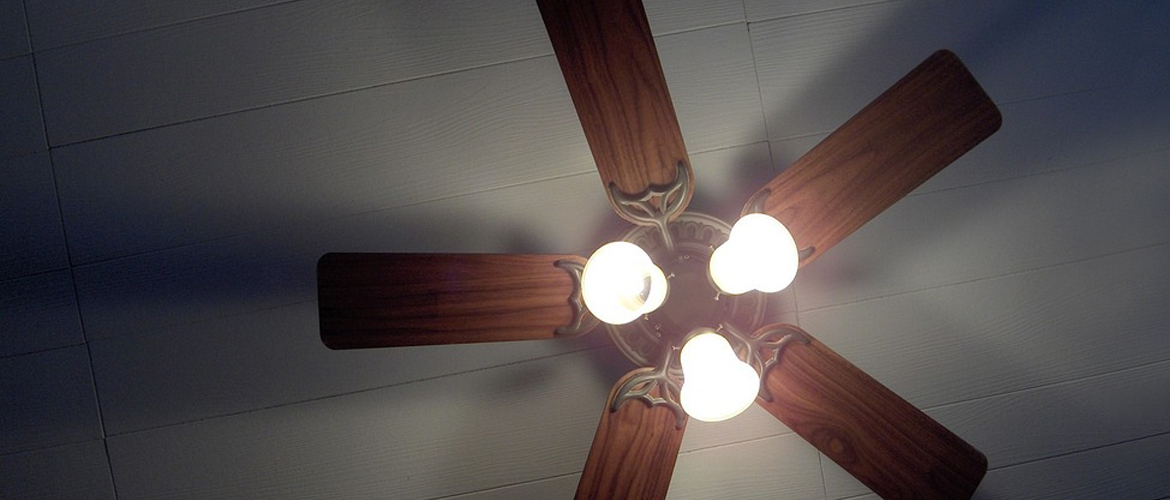A ceiling fan is a type of mechanical fan that is suspended from the ceiling of a room and uses rotating blades to circulate air. It is typically powered by an electric motor and has a set of blades mounted on a hub that is connected to the motor. When the motor is turned on, the blades rotate, creating a cooling breeze that can help to circulate air and keep the room cool. Check out the power consumption of a ceiling fan.
Electricity usage of ceiling fan
Check out some of the tricks and tips to save the electricity bill.
Power Consumption of a Ceiling Fan
Compared to air conditioners, ceiling fans consume much less energy. Running a ceiling fan typically costs only a few cents per hour, while an air conditioner can cost more per hour.
Supplementing air conditioning
Ceiling fans can help to supplement your air conditioning by improving air circulation and helping to distribute cool air more effectively throughout a room. This means that you can set your air conditioning at a higher temperature and still feel comfortable, which can reduce your energy consumption.
Reduced heating costs in the winter
Many ceiling fans have a reversible switch that allows you to change the direction of the blades. By running your ceiling fan in reverse in the winter, you can push warm air down from the ceiling, which can help to reduce your heating costs.
Energy-efficient features
Some ceiling fans come with energy-efficient features, such as LED lighting and DC motors, which use less energy than traditional incandescent bulbs and AC motors.
To maximize the energy-saving benefits of your ceiling fan, it’s important to use it correctly. Make sure that you turn off your fan when you leave a room, and adjust the fan speed based on the temperature and humidity. With the right use and maintenance, your ceiling fan can be a great tool for saving energy and reducing your electricity bill.
Ceiling Fan Power, Efficiency
Proper installation is crucial to ensure your ceiling fan operates efficiently. Make sure your ceiling fan is installed at the right height and location for maximum airflow, and that the blades are properly balanced. Improper installation can cause your ceiling fan to use more energy than necessary.
Ceiling fan maintenance
Regular maintenance of your ceiling fan can help it operate efficiently and extend its lifespan. Clean the blades regularly, check for loose screws or wobbly blades, and oil the motor if necessary.
- Use ceiling fans in conjunction with air conditioning: Using a ceiling fan in conjunction with your air conditioning can help reduce your overall energy costs. The ceiling fan can help circulate the cool air from your air conditioning system, allowing you to set your thermostat at a higher temperature and still feel comfortable.
- Choosing the right ceiling fan: When selecting a ceiling fan, consider the size of the room and the height of the ceiling. A fan that is too small for the room will not be effective, and a fan that is too large for the ceiling height can be dangerous. Also, look for features such as energy-efficient motors, LED lighting, and reversible blades.
- Ceiling fan timer and remote controls: Installing a timer or remote control for your ceiling fan can help you save energy by automatically turning the fan off after a certain amount of time or adjusting the fan speed based on the temperature and humidity.
Incorporating these tips can help you get the most out of your ceiling fan and save on your power consumption of a ceiling fan.
Clara
Related posts
Women Tips
Privacy Overview
| Cookie | Duration | Description |
|---|---|---|
| cookielawinfo-checkbox-analytics | 11 months | This cookie is set by GDPR Cookie Consent plugin. The cookie is used to store the user consent for the cookies in the category "Analytics". |
| cookielawinfo-checkbox-functional | 11 months | The cookie is set by GDPR cookie consent to record the user consent for the cookies in the category "Functional". |
| cookielawinfo-checkbox-necessary | 11 months | This cookie is set by GDPR Cookie Consent plugin. The cookies is used to store the user consent for the cookies in the category "Necessary". |
| cookielawinfo-checkbox-others | 11 months | This cookie is set by GDPR Cookie Consent plugin. The cookie is used to store the user consent for the cookies in the category "Other. |
| cookielawinfo-checkbox-performance | 11 months | This cookie is set by GDPR Cookie Consent plugin. The cookie is used to store the user consent for the cookies in the category "Performance". |
| viewed_cookie_policy | 11 months | The cookie is set by the GDPR Cookie Consent plugin and is used to store whether or not user has consented to the use of cookies. It does not store any personal data. |

